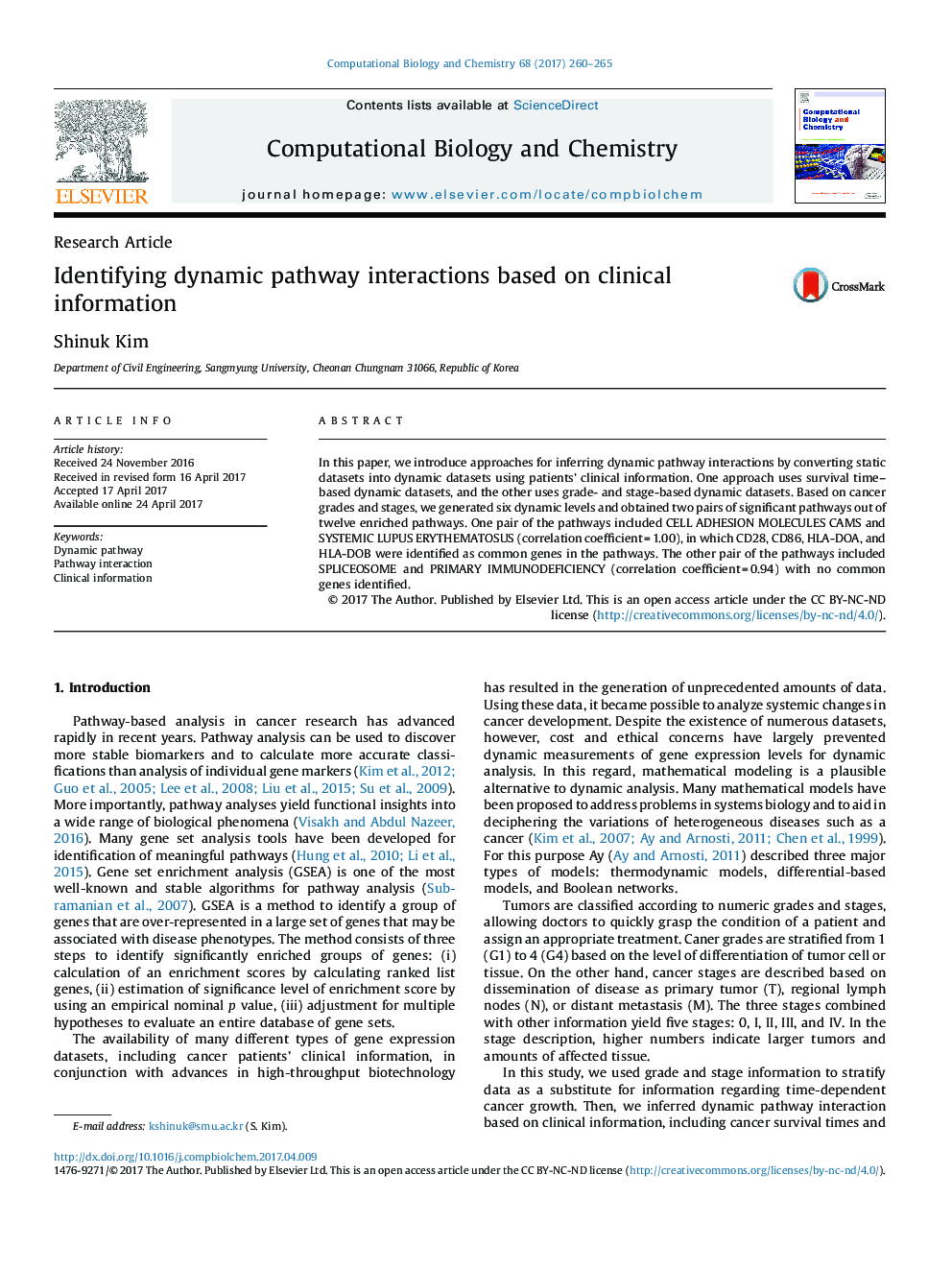| Article ID | Journal | Published Year | Pages | File Type |
|---|---|---|---|---|
| 6451364 | Computational Biology and Chemistry | 2017 | 6 Pages |
â¢The static cancer datasets were converted to dynamic datasets based on survival times or stages/grades of cancers.â¢The enriched pathways were rearranged by time series.â¢Time dependent pathway interactions were discovered using presented models.
In this paper, we introduce approaches for inferring dynamic pathway interactions by converting static datasets into dynamic datasets using patients' clinical information. One approach uses survival time-based dynamic datasets, and the other uses grade- and stage-based dynamic datasets. Based on cancer grades and stages, we generated six dynamic levels and obtained two pairs of significant pathways out of twelve enriched pathways. One pair of the pathways included CELL ADHESION MOLECULES CAMS and SYSTEMIC LUPUS ERYTHEMATOSUS (correlation coefficient = 1.00), in which CD28, CD86, HLA-DOA, and HLA-DOB were identified as common genes in the pathways. The other pair of the pathways included SPLICEOSOME and PRIMARY IMMUNODEFICIENCY (correlation coefficient = 0.94) with no common genes identified.
Graphical abstractTime dependent pathway changes using static data sets based on survival times or grade/stages of cancers.Download high-res image (129KB)Download full-size image
